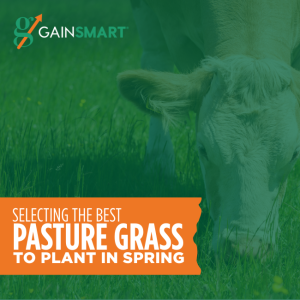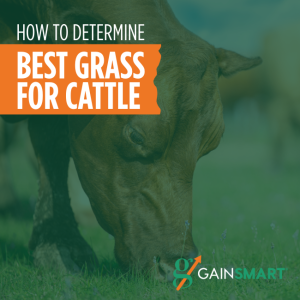
Unless you are native to the arctic, chances are you don’t enjoy the cold weather. Below freezing temperatures combined with precipitation and blowing winds are not ideal conditions for human nor beast. However, in many parts of the country, calves and cows are out on pasture, grazing during the winter. It is important to know how additional stress plays a role in their performance and what you can do to supplement their nutrition during winter grazing.
Many in agriculture rely on the Old Farmer’s Almanac. And if it is accurate, like it is so many times, this winter is going to bring many of the challenges that not only add stress to the cattle, but also the producers who care for them. The Almanac predicts colder than normal winter temperatures and normal or above normal snowfall in all areas of the U.S., other than the Pacific Northwest. While that precipitation is welcome in the form of much-needed moisture, it can add to the stress of cold for winter grazing.
Temperature Stress
Although cattle can usually withstand warm or cold climates, there are times when temperature extremes are not ideal. Like any species, cattle have a certain threshold for the cold climate. Other conditions like breed, hair coat and adaptability should be considered as well. For instance, a slick-haired bos indicus breed like a Brahman would not be very hardy in the plains or Northern states. Alternatively, cattle that are known to put on hair and condition are better suited for the cold, Northern climate. Yet, they too have a threshold for being too cold.
Let’s look at the science behind cold stress and what it means to help your animals perform at their optimum. According to Penn State, the lower critical temperature (LCT) describes the ability of cattle to withstand cold conditions. LCT is the temperature when maintenance requirements increase to the point where animal performance is negatively affected. Various sources put this temperature between 18-20 degrees Fahrenheit.
The wind is also a factor for LCT, according to Chris Cassady, Ph.D., Senior Manager of Beef Technical Sales for BioZyme® Inc.
“For every mile per hour increase in wind speed, subtract from the ambient temperature to get the true wind chill factor that your cows will thermoregulate against. If you can’t provide shelter from wind and snow, be prepared to intervene with supplemental nutrition.”
Other Stressors
Besides temperature, other stressors to consider include wind, rain and snow, mud and feed quality and quantity.
Wind
Wind can greatly impact the overall temperature and overall performance of your cattle when grazing. When cattle are grazing in the winter, it is recommended to provide some type of windbreak or living shelter belt to help weaken the wind speed. It is imperative to remember that windbreaks don’t stop the wind from blowing, especially in wide-open prairies. Their job is to temporarily slow down or redirect the wind, and in many cases, wind velocity increases as it is redirected around a break.
Consider using an old grain bin, solid fence or even a tree row as windbreaks. Remember to place them in a direction that will not cause greater challenges with snow drifting, especially if fences or roads are nearby. South Dakota State Extension offers a great resource about the amount of space needed per animal and building sturdy, reliable windbreaks for winter grazing.
Precipitation
Mother Nature can be nasty, and according to the Farmer’s Almanac, we can expect an abundance of rain and snow this year. Although most cattle “hair up” in the winter months where the climate is colder, a winter hair coat is practically useless when it becomes wet. Wet hair on the hide loses the insulation factor that is essentially air trapped between hair fibers. Seasoned producers usually know their livestock are better off with snow than cold, winter rain.
Mud
Unless it is unseasonably warm, mud typically doesn’t become a factor until late winter and early spring. Producers should eliminate mud as much as they can to help their cattle stay warm. Mud has a similar effect as rain in reducing insulation from the cattle’s hair.
For rain, snow, frozen ground and mud, use bedding to help keep cattle clean and to provide insulation. Rotate hay feeding areas if possible. Oftentimes, mud can’t be fully avoided, but try to create an area where cattle can lay down in dry bedding.
Feed Quality and Quantity
During the winter, the forage quality for grazing is significantly poorer and limited for your cattle. At the same time, the nutrient requirements increase, due to cold stress and due to the production cycle your cattle are in.
Cows that typically consume 2.5% of their bodyweight in hay might increase to 3.5%. For lactating cows and cows in the last trimester of gestation, their nutritional requirements are at their highest. Higher energy, higher quality forages will help the cattle with the increased energy they need to stay warm during the cold spells.
For stockers that are grazing, they might not need the energy a cow needs, but remember, they are still growing and gaining. Making sure they have the appropriate nutrients is also essential. Provide higher quality forage if available. Digestibility and energy levels in the forage are the key things to focus on. Higher energy forage will help the cattle deal with increased energy expenditure to keep warm.
It is always a good idea to have your hay tested in the late summer or early fall to make sure you know its quality. Just like you should never judge a book by its cover, you can never know the quality of nutrients within your forages without proper test. Learn more about taking and submitting samples for hay testing.
Quality Nutrition During Stress
According to Cassady, a good rule of thumb is that for every degree below the cow’s LCT, she will require 1% more energy in her diet just for maintenance. Producers will determine how to increase energy depending on the resources available to them.
Supplementing with hay is often one solution producers turn to, and this is a good strategy, especially if you’ve saved back your best hay for these times. Cattle can consume a few extra pounds of high-quality hay and meet their elevated maintenance requirements in moderate winter conditions.
“When forages are fed, physical fill is the limiting factor for intake. This could be problematic in severe cold conditions, because cattle may not be able to physically consume enough energy through the extra supplied hay because they get full. High-quality hay is expensive, but cows losing weight because of physical fill is just as costly if they’re losing weight,” Cassady said.
Consider introducing a mineral program or putting feed additives in your TMR to boost the digestibility of your cattle diets to unlock more energy during periods of cold stress.
Amaferm Can Help
AO-Biotics® Amaferm is a research-proven prebiotic designed to enhance digestibility. A prebiotic like Amaferm stimulates the rumen microbiome to improve digestion and energy utilization. Unlocking more nutrition from within allows producers to get more nutrition from their forages and improve energy intake limitations due to physical fill.
“A volatile fatty acid boost of 16% from daily feeding of Amaferm is nutritionally equivalent to feeding a pound of DDGS. This doesn’t even include the benefits of improved gut health without any additional labor or capital. Consider the cost of a pound of coproducts in today’s market. An increase in feed costs of 3 to 4 cents per head daily for Amaferm makes more financial sense than ordering your next truckload of DDGS,” Cassady said.
Amaferm is produced from a select AO strain through a proprietary multi-stage, dual fermentation process developed by scientists at BioZyme. The proprietary process is very important to the final product because AO is a very adaptable organism. It can take on different forms and produce many different compounds/metabolites depending on the conditions/media in which it is grown and the conditions of the fermentation products. We have learned through our research that these metabolites are key to the mode of action.
Amaferm specifically (not just AO) has been extensively researched by universities and private facilities worldwide. More than 100 peer-reviewed papers have been published on Amaferm alone. This research proves Amaferm’s mode of action and impact on the microbes and benefit to the animal in which those microbes reside.
How can you Include Amaferm in your Cattle Diet?
Amaferm is manufactured by BioZyme in Saint Joseph, Missouri. In addition to making Amaferm and other AO-Biotics, BioZyme also produces animal health and nutrition products. For grazing cattle, several options are available.
For Stockers
If you are grazing stockers, you will want to consider the Gain Smart® mineral program. Gain Smart is a line of vitamin and mineral supplements for stocker cattle that promotes healthy, economical pounds.
Gain Smart Stocker and Gain Smart Wheat are two of the formulas designed specifically for calves that are grazing. Both contain Amaferm, organic copper, iodine and zinc for maximum bioavailability and hoof health. They provide nutritional support for a healthy immune system.
Gain Smart Wheat is a free-choice vitamin and mineral supplement for stocker cattle designed to maximize efficient gain on wheat or small grain pasture.
Gain Smart Stocker is a free-choice vitamin and mineral supplement for stocker cattle designed to maximize efficient gain when grazing pasture.
For Cows
If you have cows that are in their last trimester of gestation or in lactation, their nutritional needs are at their peak. You will want to be sure that they are on a VitaFerm® Concept•Aid®.
VitaFerm is a line of nutritional supplements for beef cattle that maximize energy and forage utilization for successful production. The Concept•Aid products promote effective, easy breeding when fed 60 days pre-calving through 60 days post-breeding.
Concept•Aid comes in a variety of loose mineral and tub options. All Concept•Aid formulas contain Amaferm to help increase digestibility in your herd. To discover the Concept•Aid formula right for your operation, use our Concept•Aid Navigator.
Want to Include Amaferm in your Grazing?
You can include Amaferm into your grazing program by incorporating either Gain Smart or VitaFerm into your management system. You can also buy Amaferm to add to your own ration to help increase digestibility.
Buy Amaferm or any of the BioZyme products from your local dealer. You can also learn more about our products or purchase them online.

